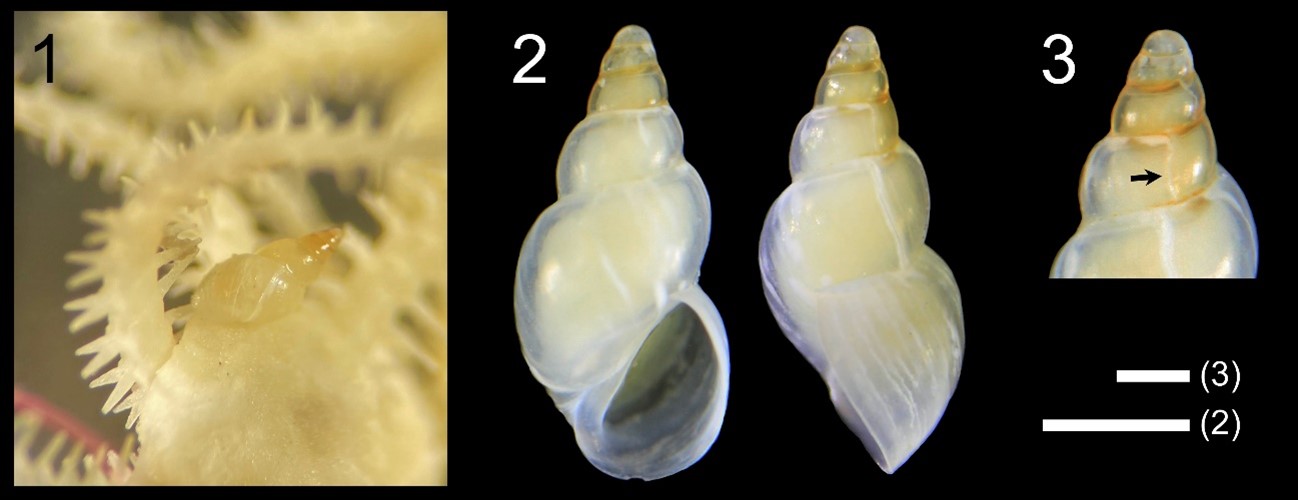DATE2024.03.06 #Press Releases
A new species of parasitic mollusk, 1.6 mm in length, was discovered!
-First in the North Pacific and third worldwide for the genus Ophiurima
Hiroshima Shudo University
School of Science, The University of Tokyo
Summary of Presentations
A research group consisting of Assistant Professor Masanori Okanishi of Hiroshima Shudo University, Research Fellow Takeshi Takano of the Meguro Museum of Parasitology, and Technical Staff Hisanori Kohtsuka of the Misaki Marine Biological Station, Graduate School of Science, The University of Tokyo, has discovered a new species of Ophieulima, the first species in the genus Ophieulima in the North Pacific Ocean. The new species was named Ophieulima yoshiharai, the first species of Ophieulima found in the North Pacific.
In 2010, Mr. Kohtsuka's Technical Staff (Specialist in the echinoderm crinoidea) conducted a bottom trawl survey in Sagami Bay, Kanagawa Prefecture, Japan, at a depth of 256-343 m to collect marine organisms.
Assistant Professor Okanishi (specialist in the echinoderm Ophiuroidea) observed a spider starfish specimen in the collection and discovered that it was Ophiactis dyscrita, a parasite with a 1.6 mm shell length on its body surface (Figure). We sent this specimen to Dr. Takano (specialist in Mollusca Gastropoda), who identified it as a rare new species of mollusk.
Excluding fossil species, only two species of Ophiurima have been reported so far, from the North Atlantic Ocean, the Mediterranean Sea, and New Zealand, making this new species the third Ophiurima species in the world. The discovery of this genus itself is also the first rare one in the North Pacific.
This achievement is the result of 1) a collaborative research effort by a team of specialists from different organisms, and 2) research focused on the microscopic environment on the body of a spider starfish.
The paper was published on 5 March 2024 in the international journal 『Journal of the Marine Biological Association of the United Kingdom』, published by the University of Cambridge.

Figure: Specimen image of Ophiurima yoshiharai.
1. parasitism on Ophiuchus discolita, 2. overall view, 3. magnified image of the upper part of the shell. Arrows indicate the boundary between the original shell and the rest of the body. Scale bars: (2) 0.5 mm; (3) 0.2 mm.
For more information, please visit the website of Hiroshima Shudo University.(in Japanese)
Journal of Publication
-
Journal name Journal of the Marine Biological Association of the United KingdomTitle of paper


